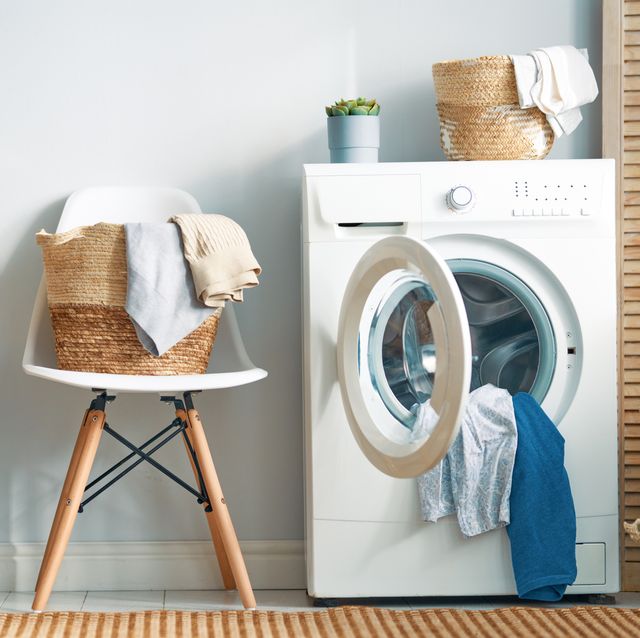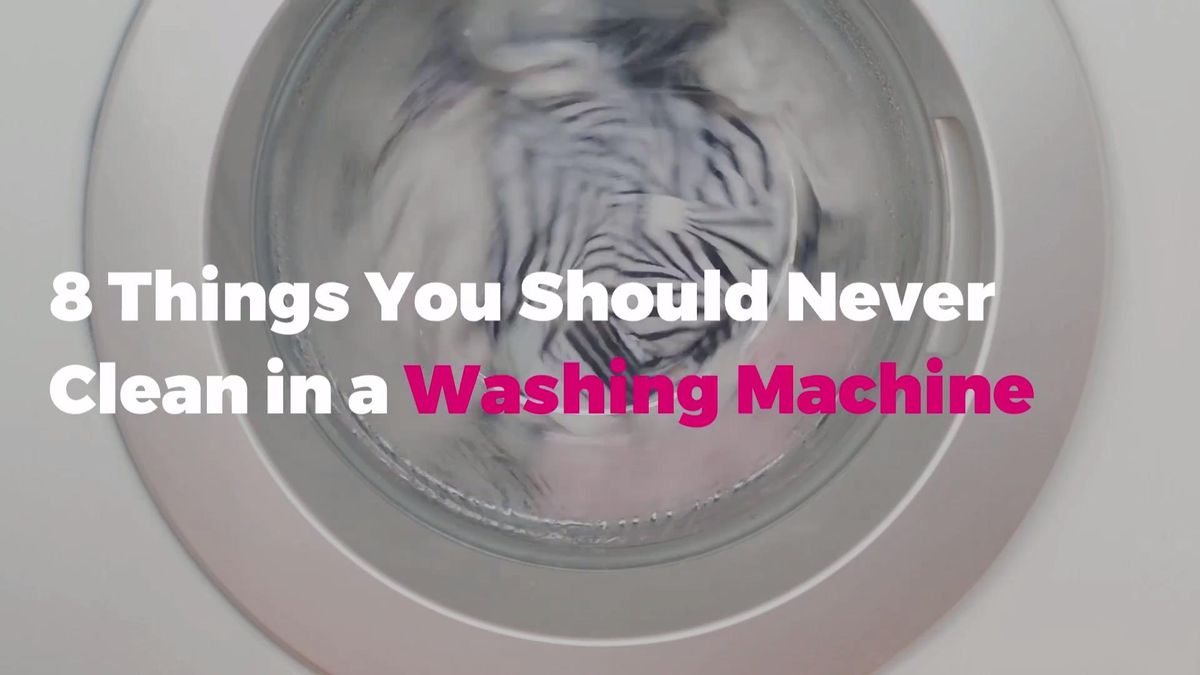Hate to be the bearer of bad news, buuuut if you're not cleaning your washing machine—as in the appliance that's designed to do the cleaning for you—then that top you're currently wearing (super cute, btw) likely isn't as fresh as it might make you feel.
No, you're not being punk'd and no, Ashton Kutcher isn't going to surprise you any second now (although that would be pretty awesome, no?).
Truth is, your washing machine doesn't actually clean itself while cleaning your clothes—no matter how logical that might seem. Rather, over time, soap, scum, and hard water can build up, creating a delish feeding ground for bacteria, says Melissa Maker, cleaning expert at Clean My Space, a housekeeping service in Canada. "Not cleaning your machine leaves it susceptible to redepositing dirt and residue back onto your clothing, which leaves it dingy-looking and creates a stinky situation."
Think: your college dorm's laundry room. But long gone are your days of textbooks and tailgates—and so should be those of gunk-ridden washing machines. Here’s everything you need to know about how and when to scrub your machine to keep it (and your clothes, towels, and bed sheets) squeaky clean.
Okay, so how exactly do you clean a washing machine?
Hey, I get it. You already have a laundry list (pun intended) of things to do, so having to add "clean washing machine" to it can seem annoying AF...except it doesn't have to be. After all, the year is 2019, which means there are tons of genius products that make this whole situation simpler. (In fact, depending on your washer sitch, it might only require pressing a button—more on that in a sec.) You can thank me the laundry gods later.
But before you get scrubbin', grab a pro-approved product such as Maker's fave: Carbona's Washing Machine Cleaner with Activated Charcoal, which helps remove bad odors.
Step one: Take a look at your tray (a.k.a. the part where you put in laundry soap). If you tend to have a heavy hand, it's very possible your tray will be, in Maker's words, "grimy," thanks to a buildup of detergent. If this is the case, remove the tray from the machine entirely, and soak it in a combo of 1 oz of Carbona's cleaner and 1 gallon of warm water. No grime going on? Wipe the tray with a product-dampened cloth, and violá.
Next, dampen another cloth—this time with just water—and wipe down the outer and inner gasket, a.k.a. the rubber ring that goes around the exterior of the drum or inside of the machine. "This is where a lot of odors come from, so keeping the area dry and free of buildup is crucial," says Maker. Which is also why she recommends wiping the gasket between washes to remove excess moisture and prevent mold (and eventually stink) from forming.
Another good idea from Maker? Wiping down the drum with a cloth that's wet with a little bit of vinegar—which is a natural cleaning solution that other pros like Kadi Dulude, owner of Wizard of Homes, uses for all cleaning steps. If you're going to go the vinegar route, both pros recommend using white vinegar because it's clear and designed for cleaning.
That being said, Marker warns that some argue vinegar will weaken the rubber, and some manufacturers actually want you to use a specifically formulated product to steer free of damage. So, be sure to read your machine's manual before committing to any cleaning solutions.
But what if I have a top-loading washing machine? How do I clean it?
"If your appliance has a self-clean sanitize cycle, then just wipe down what you can and run the cycle with some vinegar in it," Dulude says. "The sanitize cycle gets the water inside the machine hot enough to kill the bacteria and remove the dirt without much effort on your part."
No self-cleaning option? No problem. Go ahead and follow the same steps as you would for a front-loading machine, using vinegar or a product like Carbona. Just skip the gasket-cleaning part, as top loaders don't have that rubber buffer.
As for both top- and front-loading machines, be sure to leave the door open and tray ajar between washes to allow everything to dry completely since damp, dark environments are breeding grounds for bacteria, Maker explains. And, on the topic of doors, Dulude recommends wiping that section down with a little bit of vinegar as well.
Washing machines have made cleaning your clothes pretty dang easy, but—word to the wise—here are eight items you should never throw in the washer:
How do you deep clean a washing machine? I feel like mine might need it...
First, a quick refresher: A basic clean of the machine would just entail a quick wipe-down of the outside (see ya, dust and lingering drips of detergent) and insides, including all that pesky rubber.
To do a deep clean of your washing machine, the next step would be to pour some of the product—or, if going DIY, the vinegar (about 5 cups if it'll fit)—into the detergent tray and run a hot cycle. Depending on your appliance (again, get to know your manual!), you can also take it one step further.
"Some machines also have a little door at the bottom of the machine. You can open it up and drain the water that's been collecting inside the machine, which can be another reason for a smelly laundry room," Dulude explains.
Remind me again, how often do I have to do all of this wiping and washing?
Depends on how often you use the machine and what you wash in it. For example, if you work with your hands and/or in the great outdoors on the reg, and your clothes tend to show that, you might need to do a deep cleaning more often than others. No biggie!
As a general rule of thumb, however, a deep cleaning should be done every one to three months, or as soon as you see and, ahem, smell the need for it.
Meanwhile, a basic cleaning sesh sh0uld be done "as part of a weekly/biweekly clean," Dulude says. But don't forget about the post-wash wipe-down that Maker recommended earlier. Getting in the habit of removing excess moisture in the gasket will help prevent mold and, in turn, keep you from having to put in that elbow grease as often.
















